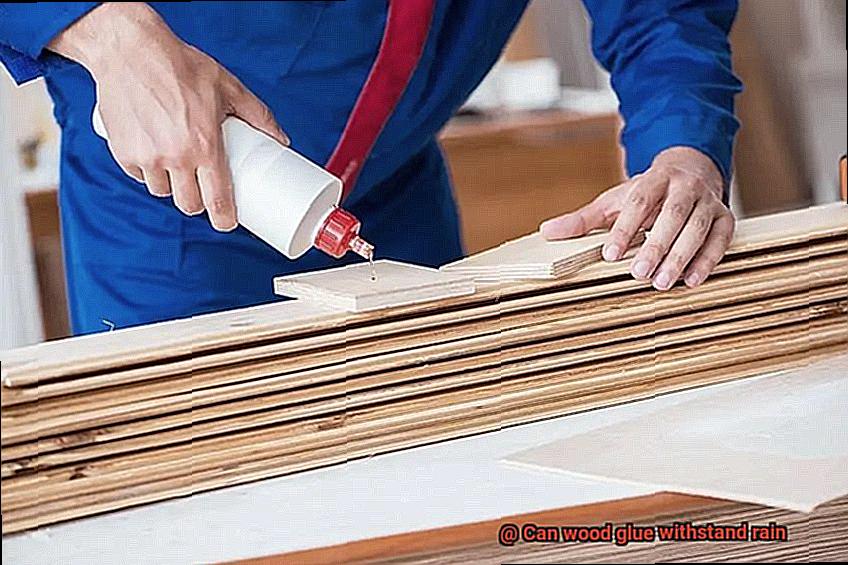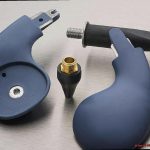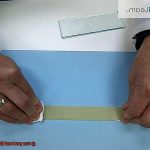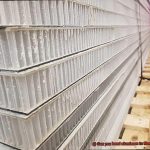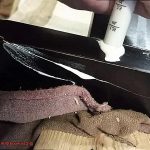Imagine this: You’ve just finished your outdoor woodworking masterpiece, and it’s a beauty. Each joint is perfectly aligned, and every surface is sanded to perfection. All that’s left is to apply the wood glue to hold everything together. But as luck would have it, the skies darken and a deluge of rain begins to pour down. The question on your mind now is – Can wood glue withstand rain?
If you’re like most woodworkers, you might be unsure whether your wood glue can handle moisture and water exposure. After all, wood glue plays a crucial role in creating stunning pieces of woodworking, and knowing how it holds up against the elements is essential before starting any project.
With so many types of wood glues available on the market today, each with its specific strengths and weaknesses, it’s no wonder that this question often arises. In this article, we’ll delve into the effects of rain on different types of wood glues. We’ll explore the various levels of waterproofing provided by each type and whether they can withstand prolonged exposure to water.
So, if you’re curious about whether your favorite wood glue can survive a downpour or not, keep reading. We’ve got all the answers you need right here.
Different Types of Wood Glue
Contents
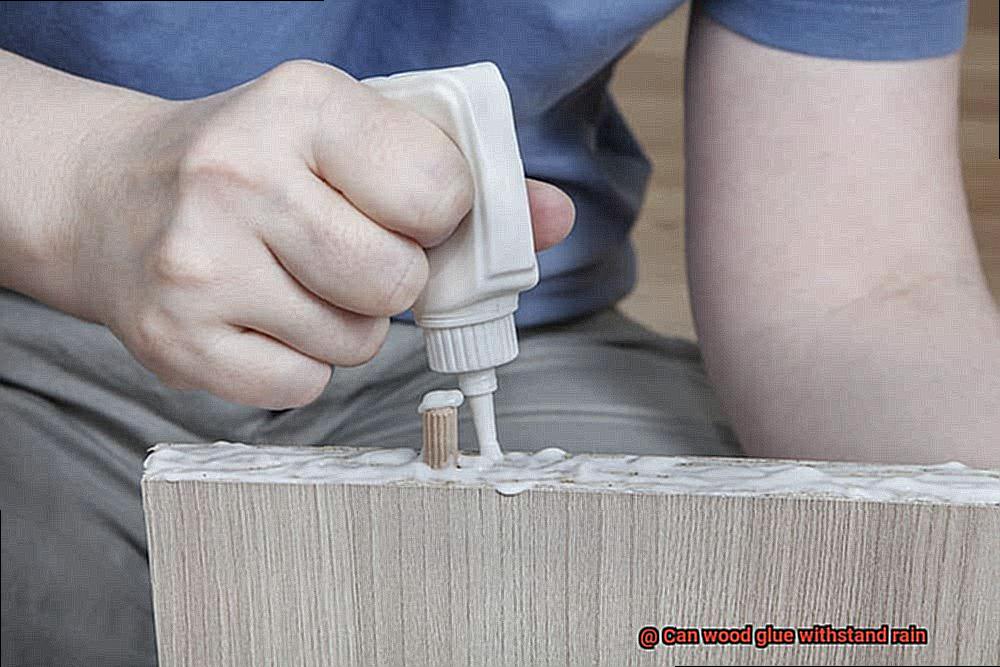
If you’re a woodworker, then you know choosing the right adhesive is crucial for your project’s success. Fortunately, with so many types of wood glue available nowadays, you can easily find one that suits your needs. From water-resistant PVA glue to waterproof epoxy and polyurethane glue, each type has its own unique properties and uses that make it stand out from the rest.
First up, we have PVA or Polyvinyl Acetate glue, which is a popular choice for woodworking projects because it dries clear and is easy to sand. Although it is water-resistant, it is not waterproof, so it’s not ideal for outdoor projects that will be exposed to rain. Instead, consider using epoxy, a two-part adhesive that creates an incredibly strong bond and is waterproof and heat-resistant, making it perfect for outdoor projects.
Another option is polyurethane glue, which expands as it dries, filling in any gaps or cracks in the wood. It’s also waterproof and can be used for outdoor projects like building a deck or a fence that’ll be exposed to rain.
Lastly, we have hide glue, which has been used for centuries and is still used by some woodworkers today. Made from animal collagen, hide glue has some water resistance but is not waterproof. It’s ideal for indoor projects like making furniture.
Remember to follow the manufacturer’s instructions carefully when using wood glue to ensure that you get the best possible bond. And keep in mind that choosing the right type of glue for your project depends on the conditions it’ll be exposed to.
Is Wood Glue Waterproof?
Well, the answer isn’t as simple as yes or no. The truth is, it depends on the type of wood glue you’re using.
Polyurethane glue is your best bet for outdoor projects and furniture because of its water-resistant properties. It creates an enduring bond that can stand up to exposure from water and humidity. However, traditional PVA glue isn’t waterproof and should only be used for indoor projects, such as furniture and cabinetry. Over time, PVA glue will break down if exposed to water.
But hold on just a second. Even if you use waterproof wood glue, it can still fail if it’s not applied correctly. Before applying the glue, it’s crucial to ensure that the surface is clean and dry. Any dirt or moisture left on the surface can weaken the bond. Furthermore, it’s vital to allow the glue enough time to cure properly before exposing it to water or humidity.
Now, how do you guarantee that your wood glue will endure water exposure? Firstly, choose the right type of glue for your project. For outdoor projects, use polyurethane glue; for indoor projects, go for traditional PVA glue. Secondly, clean and dry the surface before applying the glue. Finally, follow the manufacturer’s instructions carefully regarding curing time.
Factors That Affect the Performance of Wood Glue in the Rain
It’s not a straightforward answer. Several factors come into play when it comes to the performance of wood glue in wet conditions. Understanding these factors is key to achieving a strong and durable bond.
One of the primary factors to consider is the type of glue being used. Traditional PVA glue is excellent for indoor projects but not suitable for outdoor use. Polyurethane glue is your go-to for outdoor projects due to its water-resistant properties. Similarly, epoxy glue can also perform well in wet conditions but may require more time to cure properly.
Another critical factor to consider is the quality of the wood being used. If the wood is not properly prepared or is of poor quality, it can negatively impact how well the glue will bond with it. Additionally, high moisture content in the wood can also weaken the bond strength of the glue.
Environmental conditions during application and curing also play a significant role in the performance of wood glue in wet conditions. High humidity or rainfall during the curing process can interfere with the bonding process and result in weaker bonds. Temperature plays a crucial role, as most wood glues require specific temperature ranges for proper bonding.
Finally, proper application technique is crucial when it comes to ensuring that wood glue can withstand rain. Applying too little glue or not allowing sufficient drying time can result in weaker bonds that may not hold up in wet conditions.
How to Choose the Right Type of Glue for Your Project
Are you ready to take on your next DIY project? Whether you’re building a birdhouse or revamping an old piece of furniture, choosing the right glue is essential for achieving a strong and long-lasting bond. Here are five tips from a glue expert to help you select the perfect adhesive for your project.
Know your materials.
Before selecting a glue, it’s crucial to consider the materials you will be bonding together. Different types of glue work better with certain materials than others. For instance, if you’re working with wood, polyurethane or epoxy glue may be the best option.
Think about environmental conditions.
It’s also vital to think about the conditions your finished project will face. If it will be exposed to moisture or extreme temperatures, choose a waterproof glue like polyurethane or epoxy.
Consider strength and flexibility.
The strength and flexibility of the glue can make or break your project. If you require a strong bond that can withstand stress, opt for a more robust adhesive like epoxy.
Research product labels.
Before purchasing any glue, read the product label and do some research to ensure that it’s safe for your intended use and won’t have any negative environmental impacts.
Follow manufacturer instructions.
Last but not least, always follow the manufacturer’s instructions when using any type of glue. Improper use can lead to weak bonds or even harm to yourself or others.
By following these tips, you’ll be able to choose the perfect glue for your DIY project and achieve a professional-looking finish. If you’re working on an outdoor wood project exposed to rain or humidity, polyurethane or epoxy glue is a great choice. For indoor projects, PVA (polyvinyl acetate) glue is an excellent option for bonding porous materials like wood, paper, and fabric.
Tips for Applying Wood Glue in Wet Conditions
Working on a woodworking project in wet conditions can be daunting, but applying wood glue doesn’t have to add to the stress.
With the right tips and precautions, you can achieve a strong bond that will withstand moisture exposure.
Here are five subtopics to keep in mind when applying wood glue in wet conditions:
Choose the Right Type of Glue
Not all wood glues are made equal when it comes to moisture resistance. If you plan to use it outdoors, choose a waterproof or weatherproof glue specifically designed for outdoor use. It’ll save you a lot of trouble down the line.
Prep the Surface Properly
Clean and dry the surface of the wood before applying the glue. Any dirt or moisture can interfere with the bond, which is why it’s so important to ensure the surface is completely dry before application.
Work Quickly and Efficiently
When applying glue in wet conditions, work quickly to avoid any delays that may allow moisture to seep into the joint. Apply a generous amount of glue and spread it evenly over the surface using a brush or roller. Quick application will ensure that the glue doesn’t come into contact with any moisture.
Apply Pressure
In wet conditions, moisture can weaken the bond if it’s not properly secured. That’s why using clamps or other types of pressure to ensure a strong bond is crucial. Applying enough pressure will help create good contact between the two surfaces and prevent any moisture from interfering.
Allow Ample Drying Time
Allow the glue to cure for at least 24 hours before exposing it to any moisture. This time may vary depending on the type of glue used, so make sure to read and follow the manufacturer’s instructions carefully.
Also Read: Is Elmer’s Glue Waterproof?
Conclusion
To sum it up, the answer to whether wood glue can endure rain is not a simple yes or no. It’s a matter of various factors such as the type of glue, quality of wood, and environmental conditions during application and curing. If you want your project to last long outdoors, it’s crucial to choose the right adhesive. Polyurethane or epoxy glue is ideal for outdoor projects exposed to rain or humidity, while PVA glue is suitable for indoor projects.
When applying wood glue in wet conditions, proper preparation is key. You need to clean and dry the surface before applying the adhesive. Moreover, working quickly and efficiently and applying pressure with clamps or other types of pressure are necessary steps to ensure a strong bond that can withstand moisture exposure.
Always read and follow the manufacturer’s instructions when using any type of glue. By doing so and considering all the factors mentioned above, you’ll be able to pick the perfect adhesive for your DIY project.

